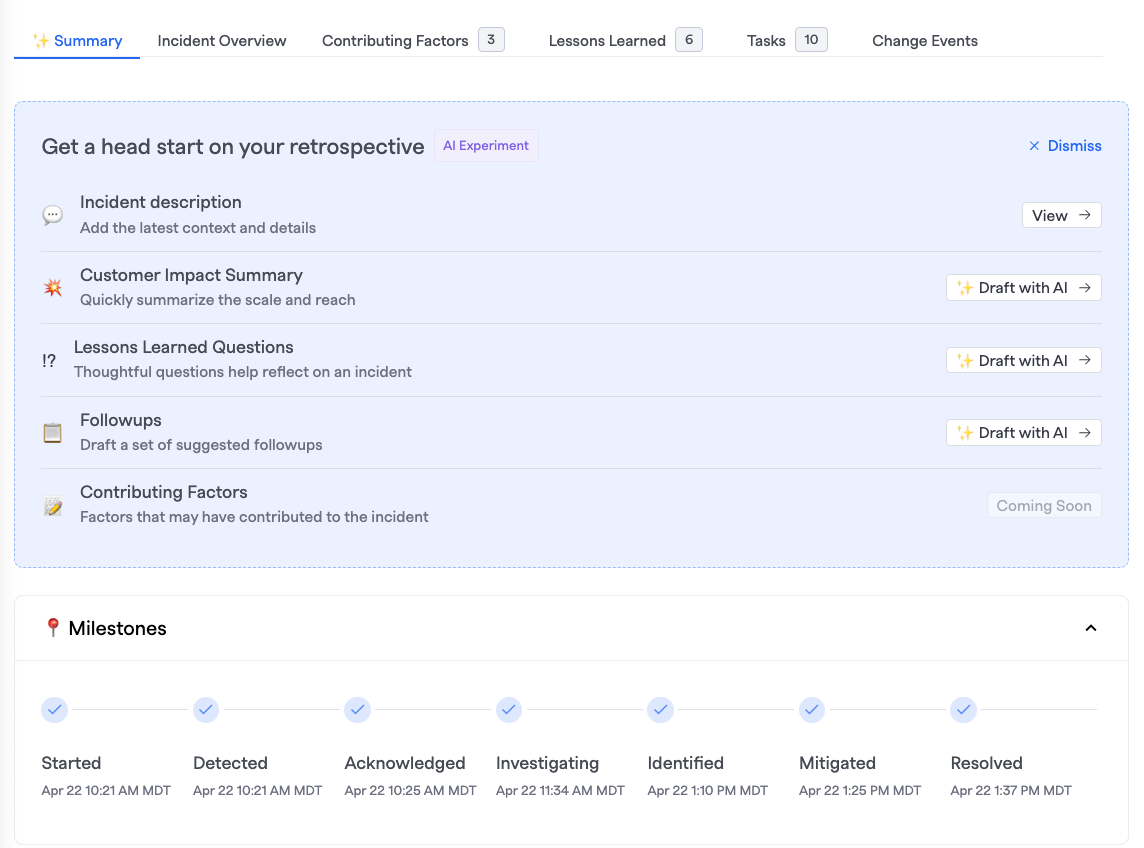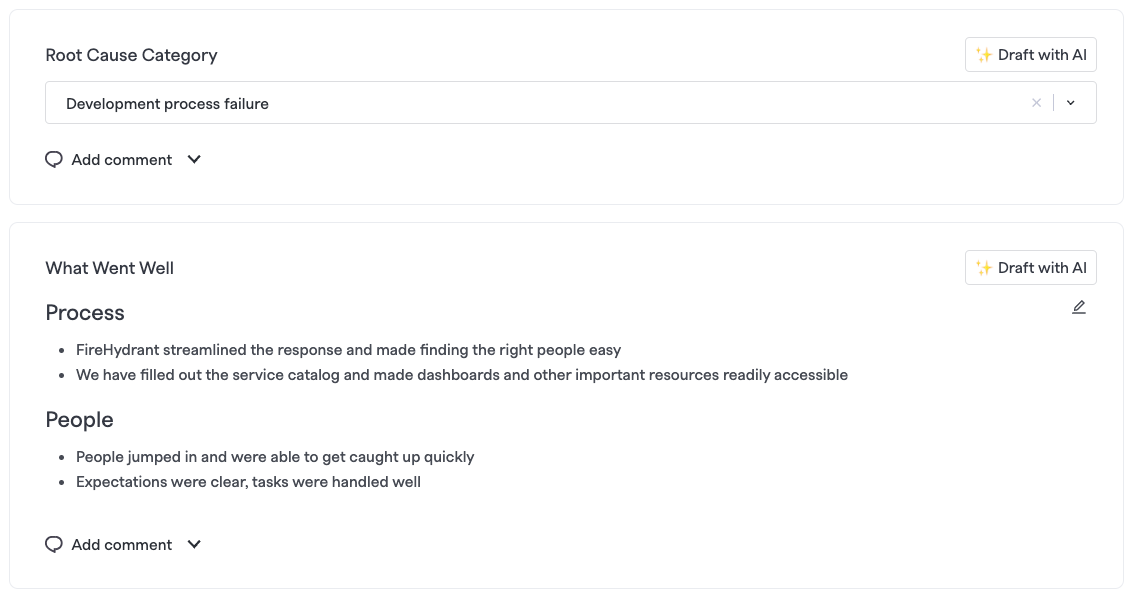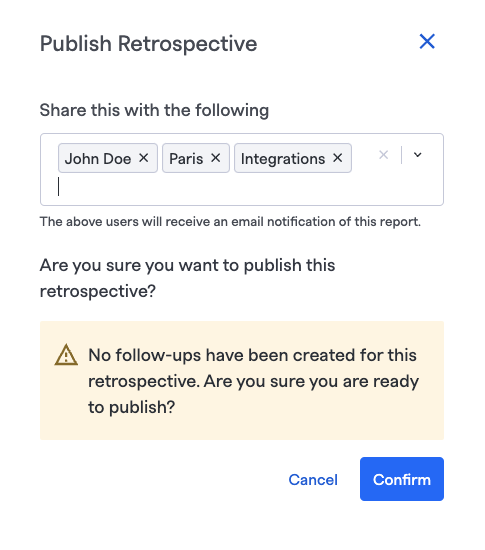Conducting Retrospectives
When an incident has been resolved, you can create a templated retrospective. FireHydrant automatically gathers the important details - timeline events, links, impacted components, assigned responders, and more - to make learning from incidents as easy as possible.
Starting the retrospective
Although you can initiate the Retrospective from your chat tool, you'll need to head over to the FireHydrant Web UI to conduct this final stage of the incident fully.
/fh start retro # In Slack
Note:
Starting the retro will transition the milestone to Retrospective Started, which also resolves the incident. This will happen regardless of what the current milestone is, so use with caution.
In the Incident Command Center UI, once the incident is resolved, the button at the top right turns into Start retrospective.

Starting the retrospective from the Command Center
Conducting the retrospective

Incident Retrospective
Like the Command Center, the Retrospective has two sections: the main section and the timeline.
The main section contains the core content of the retrospective, separated into multiple tabs. You can work your way through all the details and tabs individually.
Timeline
The timeline is to the right and is the same timeline shown in the Command Center. By default, it is filtered down to only Starred Events. Here, you can modify the filters to view other events, insert additional manual timeline events, and star or unstar events.
Note:
Only Starred Events will be exported to the final copies of the Retrospective in the PDF, Google Docs, or Confluence.
✨ Summary (requires AI)

Summary tab in Retrospective view
The Summary tab is similar to the Command Center and functions as an AI "dashboard" for this incident. You'll have buttons to draft or regenerate values for fields like Description and Customer Impact Summary. It can also attempt to answer your Lessons Learned Questions and draft suggested Followups.
Overview
The Overview tab provides summaries of key information from the incident.
Milestones is a new section showing each status transition's timestamp, the duration from the start of the incident for each milestone and the duration from the previous milestone. Milestone times can be edited by clicking the dropdown of the current milestone at the top, just as in the Command Center.
The rest of the sections - Description, Customer Impact, Impact, Responders, Tasks, Runbooks, Links, and other details are all of the same data and information as seen in the Command Center before resolving the incident.
Contributing Factors

Contributing factors tab in Retrospective view
These items are seen as having led to the incident, or the "causes". Many of our customers do their "5 Whys" analysis here and note any other factors that could have contributed to starting this incident.
Discussing the Contributing Factors will often yield clear action items for the team to follow up on and prioritize for the next engineering sprint or cycle.
Lessons Learned

Example custom questions for Lessons Learned tab
These are review questions to further contextualize data and information. FireHydrant ships with default questions, but these can be customized according to your organization's needs.
Often, organizations will use these fields to answer key, custom questions about their processes. In addition to these Lessons Learned, which tend to be more qualitative in nature, you can also configure Custom Fields to collect data. Read more about that here.
Tasks and Change Events
The Tasks and Change Events tabs are the same tabs as shown in Command Center. Here you can review all of the Tasks and Follow-ups that were created and assigned throughout the incident as well as check or manage any Change Events that were associated with the incident.
Publishing the retrospective

Retrospective publish modal
Once you've filled out the Retrospective, click Publish at the top right, which will open a modal to confirm. Here, FireHydrant automatically selects all of the involved personnel in the incident who will receive email notifications of the incident retrospective.
transition the incident to the final milestone: Retrospective Completed. This will automatically generate a PDF report of the retrospective, and if your organization has these Runbook steps configured, it will also export the report to Google Docs and Confluence.

Example PDF export
Next Steps
- Learn how to Customize the Retrospective Lessons Learned questions
- See how our Retro Collaboration features make it easier for your team members to communicate and ask questions during the retrospective
- Look at our Analytics for visualization and breakdown of impacted infrastructure, retrospective and task completion rates, and more
- View Runbook steps for exporting:
Updated 1 day ago
